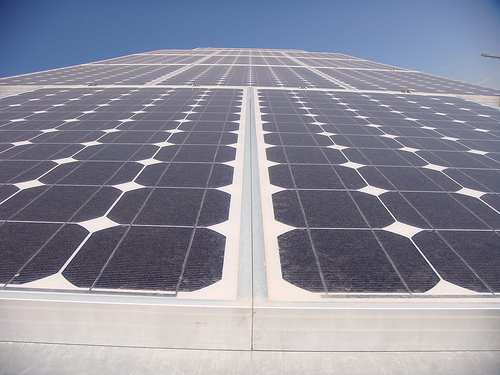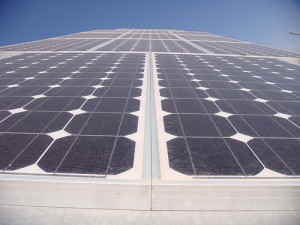
The Department of Defense has been on a roll with new solar energy installations, but the real action is going on behind the scenes in laboratories where DoD is quietly supporting research into low cost, lightweight solar cells enhanced with quantum dots. In the latest project, researchers from the Army Research Laboratory and the Air Force Office of Scientific Research have teamed up with the University of Buffalo to create a quantum-enhanced technology that could boost existing solar cell efficiency by up to 45 percent, and possibly more.
Quantum Dots and Solar Power
Quantum dots are microscopic crystals, less than a nanometer (one billionth of a meter) wide. Because of their extremely small size, quantum dots have unique properties that could revolutionize the production of cheap, ultra-efficient solar cells. They can be created through a chemical reaction that avoids the energy consumption and maintenance costs involved in fabricating that other important semiconductor in photovoltaic technology, silicon.
Army and Air Force Pursue Q-Dot Solar Tech
The University of Buffalo project involves increasing the efficiency of solar cells by embedding quantum dots within them, enabling the cells to capture more light from the infrared end of the spectrum. Other research teams are pursuing a similar path but the Buffalo team has added a new twist: their quantum dots are selectively “doped” to have a built-in charge, which makes them repel electrons that otherwise might be trapped. This enables more electrons to contribute to the electricity generated by the solar cell.
Low-Cost Solar Power From the Department of Defense to You, with Love
The Buffalo team has gotten well beyond the tinkering-around phase of its research and has founded a company called OPtoElectronic Nanodevices LLC. (OPEN LLC) to commercialize its technology, which it calls Q-BIC (quantum dots are called Q-dots for short). Q-BICs can be applied to existing solar cells, so there is no need to spend additional time developing a platform in which to embed them. The next step is to get additional funding, if not from federal resources then from private investors, to get the technology in shape for mass production.
Source: Clean Technica

 Follow
Follow